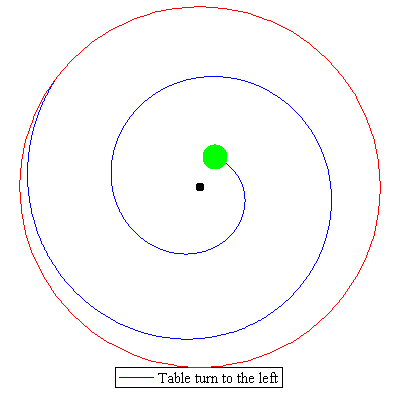So I was helping my daughter prepare for a AP physics test. I studied Physics at university many many years ago and always assume I'll be able to figure out any reasonable question about mechanics.
I created a problem for her to solve, and overshot what she could do - however I subsequently realized I think I've overshot what I can do as well.
The problem is as follows (the initial part I see on this forum comes up frequently):
I have a turntable with a radius of 2 meters. I have a coin or object on the turntable 1 meter from the center. Static coefficient of friction 0.8, dynamic/kinetic coefficient of friction 0.5. The turntable increases angular velocity very gradually.
a) What is the angular velocity of the turntable at which the coin starts to slide.
b) Assuming the turntable maintains this angular velocity, how long does it take for the coin to slip off the edge of the turntable.
Now part a) is easy and has been covered elsewhere. Part b) is a lot more difficult (for me). I'm looking for a pointer in the right direction, at least what I should be searching for to get a better understanding.
I thought initially I could find the function a(r), to give me the acceleration at any radius a, considering the kinetic friction and centripetal(/centrifugal) force. Then integrate that over the 1 meter it's going to slide to find the time.
This in itself then started getting much more difficult, since I need to integrate over time to get the velocity, but over distance to total up the time. So this is pointer request 1. Assuming a variant of this problem in which it is a collar on a rotating rod, and hence is constrained to move along the rotating radial line, how would I go about doing this?
Then the second issue I started to realize is that it wouldn't even move along the (rotating) radial line - since it is now sliding it will curve backward from the perspective of the observer on the turntable. How would one describe this behavior? What would be the search terms to find more info on this? I can do it numerically but can't figure out how to do this analytically.


